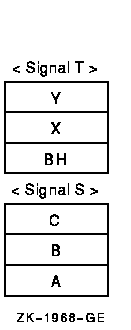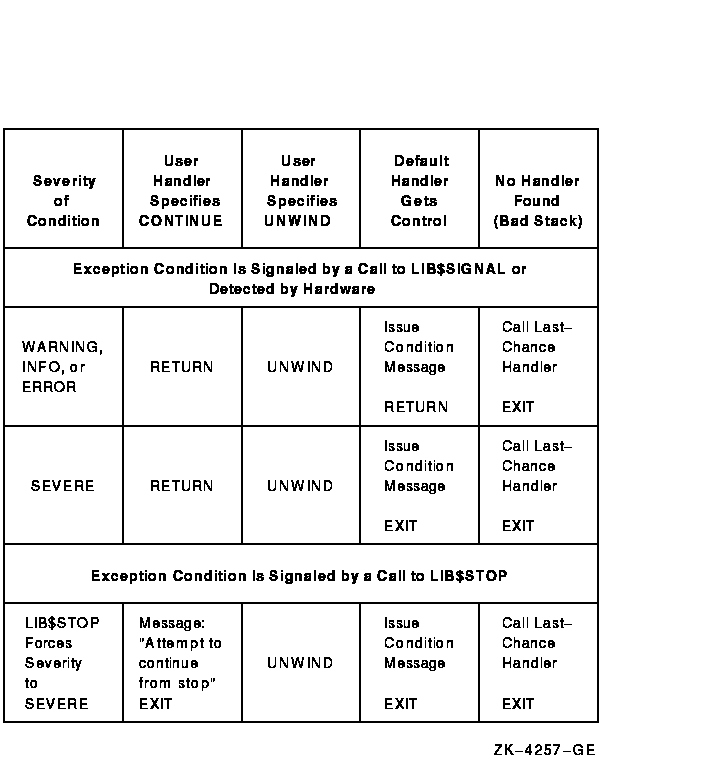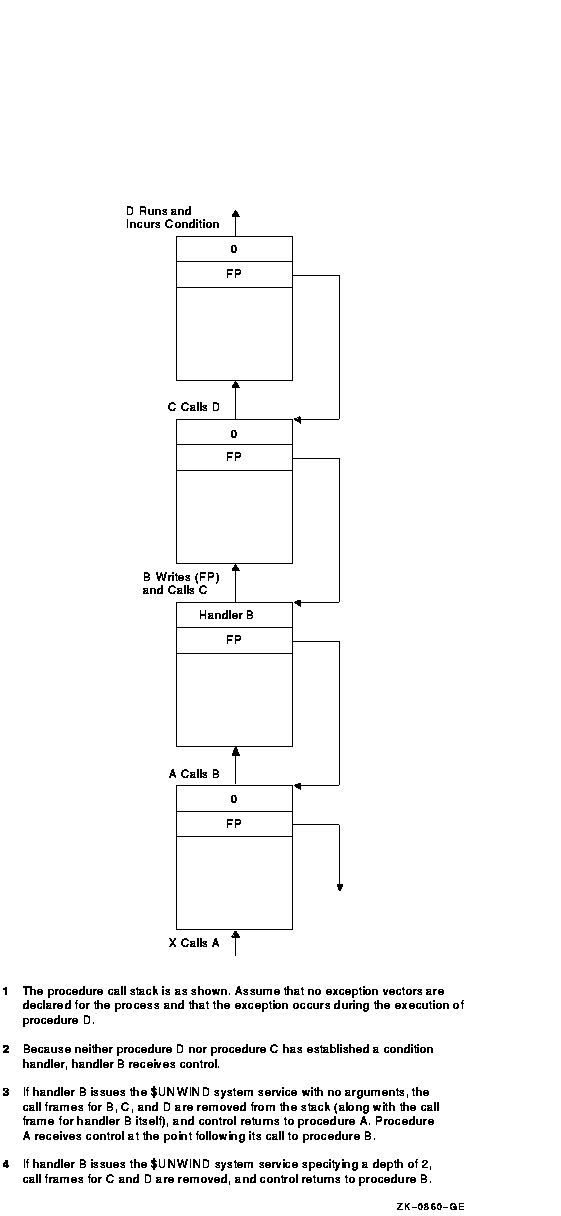![[Compaq]](../../images/hp.gif)
![[Go to the documentation home page]](../../images/buttons/hp_bn_site_home.gif)
![[How to order documentation]](../../images/buttons/hp_bn_order_docs.gif)
![[Help on this site]](../../images/buttons/hp_bn_site_help.gif)
![[How to contact us]](../../images/buttons/hp_bn_comments.gif)
![[OpenVMS documentation]](../../images/hp_ovmsdoc_sec_head.gif)
| Document revision date: 15 July 2002 | |
![[Compaq]](../../images/hp.gif) |
![[Go to the documentation home page]](../../images/buttons/hp_bn_site_home.gif)
![[How to order documentation]](../../images/buttons/hp_bn_order_docs.gif)
![[Help on this site]](../../images/buttons/hp_bn_site_help.gif)
![[How to contact us]](../../images/buttons/hp_bn_comments.gif)
|
![[OpenVMS documentation]](../../images/hp_ovmsdoc_sec_head.gif)
|
|
| Previous | Contents | Index |
On Alpha systems, the mechanism array returns much the same data as it does on VAX systems, though its format is changed. The mechanism array returned on Alpha systems preserves the contents of a larger set of integer scratch registers as well as the Alpha floating-point scratch registers. In addition, because Alpha registers are 64 bits long, the mechanism array is constructed of quadwords (64 bits), not longwords (32 bits) as it is on VAX systems. Figure 9-10 shows the format of the mechanism array on Alpha systems.
Figure 9-10 Mechanism Array on Alpha Systems

Table 9-11 describes the arguments in the mechanism array.
| Argument | Description |
|---|---|
| CHF$IS_MCH_ARGS | Represents the number of quadwords in the mechanism array, not counting the argument count quadword. (The value contained in this argument is always 43.) |
| CHF$IS_MCH_FLAGS |
Flag bits <63:0> for related argument mechanism information
defined as follows for CHF$V_FPREGS:
Bit <0>: When set, the process has already performed a floating-point operation and the floating-point registers stored in this structure are valid. If this bit is clear, the process has not yet performed any floating-point operations, and the values in the floating-point register slots in this structure are unpredictable. |
| CHF$PH_MCH_FRAME | The frame pointer (FP) in the procedure context of the establisher. |
| CHF$IS_MCH_DEPTH | Positive count of the number of procedure activation stack frames between the frame in which the exception occurred and the frame depth that established the handler being called. |
| CHF$PS_MCH_DADDR | Address of the handler data quadword if the exception handler data field is present (as indicated by PDSC.FLAGS.HANDLER_DATA_VALID); otherwise, contains zero. |
| CHF$PH_MCH_ESF_ADDR | Address of the exception stack frame (see the Alpha Architecture Reference Manual). |
| CHF$PH_MCH_SIG_ADDR | Address of the signal array. The signal array is a 32-bit (longword) array. |
| CHF$IH_MCH_SAVR nn | A copy of the saved integer registers at the time of the exception. The following registers are saved: R0, R1, and R16--R28. Registers R2--R15 are implicitly saved in the call chain. |
| CHF$FM_MCH_SAVF nn | A copy of the saved floating-point registers at the time of the exception or may have unpredictable data as described in CHF$IS_MCH_FLAGS. If the floating-point register fields are valid, the following registers are saved: F0, F1, and F10--F30. Registers F2--F9 are implicitly saved in the call chain. |
For more information and recommendations about using the mechanism
argument vector on Alpha systems, see Migrating to an OpenVMS AXP System: Recompiling and Relinking Applications. Note that this
manual has been archived but is available on the OpenVMS Documentation
CD-ROM.
9.8.5 Multiple Active Signals
A signal is said to be active until the routine that signaled regains control or until the stack is unwound or the image exits. A second signal can occur while a condition handler or a routine it has called is executing. This situation is called multiple active signals or multiple exception conditions. When this situation occurs, the stack scan is not performed in the usual way. Instead, the frames that were searched while processing all of the previous exception conditions are skipped when the current exception condition is processed. This is done in order to avoid recursively reentering a routine that is not reentrant. For example, Fortran code typically is not recursively reentrant. If a Fortran handler were called while another activation of that handler was still going, the results would be unpredictable.
A second exception may occur while a condition handler or a procedure that it has called is still executing. In this case, when the exception dispatcher searches for a condition handler, it skips the frames that were searched to locate the first handler.
The search for a second handler terminates in the same manner as the initial search, as described in Section 9.6.
If the SYS$UNWIND system service is issued by the second active condition handler, the depth of the unwind is determined according to the same rules followed in the exception dispatcher's search of the stack: all frames that were searched for the first condition handler are skipped.
Primary and secondary vectored handlers, on the other hand, are always entered when an exception occurs.
If an exception occurs during the execution of a handler that was established in the primary or secondary exception vector, that handler must handle the additional condition. Failure to do so correctly might result in a recursive exception loop in which the vectored handler is repeatedly called until the user stack is exhausted.
The modified search routine is best illustrated with an example. Assume the following calling sequence:
Figure 9-11 Stack After Second Exception Condition Is Signaled

YH
XH
BHH (the handler for routine B's handler)
AH
Because of the possibility of multiple active signals, you should be
careful if you use an exception vector to establish a condition
handler. Vectored handlers are called, not skipped, each time an
exception occurs.
9.9 Types of Condition Handlers
On VAX systems, when a routine is activated, the first longword in its stack frame is set to 0. This longword is reserved to contain an address pointing to another routine called the condition handler. If an exception condition is signaled during the execution of the routine, the OpenVMS Condition Handling Facility uses the address in the first longword of the frame to call the associated condition handler.
On Alpha systems, each procedure, other than a null frame procedure, can have a condition handler potentially associated with it, identified by the HANDLER_VALID, STACK_HANDLER, or REG_HANDLER field of the associated procedure descriptor. You establish a handler by including the procedure value of the handler procedure in that field.
The arguments passed to the condition-handling routine are the signal and mechanism argument vectors, described in Section 9.8.2, Section 9.8.3, and Section 9.8.4.
Various types of condition handlers can be called for a given routine:
The operating system establishes the following default condition handlers each time a new image is started. The default handlers are shown in the order they are encountered when the operating system processes a signal. These three handlers are the only handlers that output error messages.
| Severity | Error Type | Action |
|---|---|---|
| 1 | Success | Continue |
| 3 | Information | Continue |
| 0 | Warning | Continue |
| 2 | Error | Continue |
| 4 | Severe | Exit |
Displays the message associated with the condition code and then continues program execution or, if the error is severe, terminates execution. The catchall handler is not invoked if the traceback handler is enabled.
In the following example, if the condition code INCOME_LINELOST is signaled at line 496 of GET_STATS, regardless of which default handler is in effect, the following message is displayed:
%INCOME-W-LINELOST, Statistics on last line lost due to CTRL/Z |
If the traceback handler is in effect, the following text is also displayed:
%TRACE-W-TRACEBACK, symbolic stack dump follows
module name routine name line rel PC abs PC
GET_STATS GET_STATS 497 00000306 00008DA2
INCOME INCOME 148 0000015A 0000875A
0000A5BC 0000A5BC
00009BDB 00009BDB
0000A599 0000A599
|
Because INCOME_LINELOST is a warning, the line number of the next
statement to be executed (497), rather than the line number of the
statement that signaled the condition code, is displayed. Line 148 of
the program unit INCOME invoked GET_STATS.
9.9.2 Interaction Between Default and User-Supplied Handlers
Several results are possible after a routine signals, depending on a number of factors, such as the severity of the error, the method of generating the signal, and the action of the condition handlers you have defined and the default handlers. Given the severity of the condition and the method of signaling, Figure 9-12 lists all combinations of interaction between user condition handlers and default condition handlers.
Figure 9-12 Interaction Between Handlers and Default Handlers

9.10 Types of Actions Performed by Condition Handlers
When a condition handler returns control to the OpenVMS Condition
Handling facility (CHF), the facility takes one of the following types
of actions, depending on the value returned by the condition handler:
One type of action a condition handler can take is to unwind the procedure call stack. The unwind operation is complex and should be used only when control must be restored to an earlier procedure in the calling sequence. Moreover, use of the SYS$UNWIND system service requires the calling condition handler to be aware of the calling sequence and of the exact point to which control is to return.
SYS$UNWIND accepts two optional arguments:
If no argument is supplied to SYS$UNWIND, the unwind is performed to the caller of the procedure that established the condition handler that is issuing the SYS$UNWIND service. Control is returned to the address specified in the return PC for that procedure. Note that this is the default and the normal case for unwinding.
Another common case of unwinding is to unwind to the procedure that declared the handler. On VAX systems, this is done by using the depth value from the exception mechanism array (CHF$L_MCH_DEPTH) as the depth argument to SYS$UNWIND. On Alpha systems, this is done by using the depth value from the exception mechanism array (CHF$IS_MCH_DEPTH) as the depth argument to SYS$UNWIND.
Therefore, it follows that the default unwind (no depth specified) is equivalent to specifying CHF$L_MCH_DEPTH plus 1 on VAX systems. On Alpha systems, the default unwind (no depth specified) is equivalent to specifying CHF$IS_MCH_DEPTH plus 1. In certain instances of nested exceptions, however, this is not the case. Compaq recommends that you omit the depth argument when unwinding to the caller of the routine that established the condition handler.
Figure 9-13 illustrates an unwind situation and describes some of the possible results.
The unwind operation consists of two parts:
For this reason, the stack is in an intermediate state directly after calling SYS$UNWIND. Handlers should, in general, return immediately after calling SYS$UNWIND.
During the actual unwinding of the call stack, the unwind routine examines each frame in the call stack to see whether a condition handler has been declared. If a handler has been declared, the unwind routine calls the handler with the status value SS$_UNWIND (indicating that the call stack is being unwound) in the condition name argument of the signal array. When a condition handler is called with this status value, it can perform any procedure-specific cleanup operations required. For example, the handler should deallocate any processwide resources that have been allocated. Then, the handler returns control to the OpenVMS Condition Handling facility. After the handler returns, the call frame is removed from the stack.
When a condition handler is called during the unwinding operation, the condition handler must not generate a new signal. A new signal would result in unpredictable behavior.
Thus, in Figure 9-13, handler B can be called a second time, during the unwind operation. Note that handler B does not have to be able to interpret the SS$_UNWIND status value specifically; the RET instruction merely returns control to the unwind procedure, which does not check any status values.
Handlers established by the primary, secondary, or last-chance vector are not called, because they are not removed during an unwind operation.
While it is unwinding the stack, the OpenVMS Condition Handling facility ignores any function value returned by a condition handler. For this reason, a handler cannot both resignal and unwind. Thus, the only way for a handler to both issue a message and perform an unwind is to call LIB$SIGNAL and then call $UNWIND. If your program calls $UNWIND before calling LIB$SIGNAL, the result is unpredictable.
When the OpenVMS Condition Handling facility calls the condition handler that was established for each frame during unwind, the call is of the standard form, described in Section 9.2. The arguments passed to the condition handler (the signal and mechanism argument vectors) are shown in Section 9.8.2, Section 9.8.3, and Section 9.8.4.
On VAX systems, if the handler is to specify the function value of the last function to be unwound, it should modify the saved copies of R0 and R1 (CHF$L_MCH_SAVR0 and CHF$L_MCH_SAVR1) in the mechanism argument vector.
On Alpha systems, the handler should modify the saved copies of R0 and R1 (CHF$IH_MCH_SAVRnn).
R0 and R1 are restored from the mechanism argument vector at the end of the unwind.
Figure 9-13 Unwinding the Call Stack

| Previous | Next | Contents | Index |
![[Go to the documentation home page]](../../images/buttons/hp_bn_site_home.gif)
![[How to order documentation]](../../images/buttons/hp_bn_order_docs.gif)
![[Help on this site]](../../images/buttons/hp_bn_site_help.gif)
![[How to contact us]](../../images/buttons/hp_bn_comments.gif)
|
| privacy and legal statement | ||
| 5841PRO_029.HTML | ||